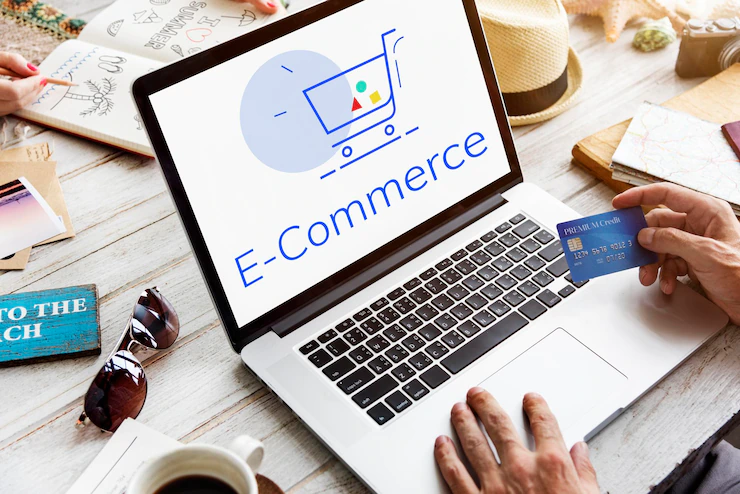Starting An E-Commerce Business In Australia Checklist
by Arnab Dey Business Published on: 25 October 2022 Last Updated on: 13 May 2023

Australia is the 11th largest market for e-Commerce businesses. According to statistics, the revenue in the Australian eCommerce market for 2022 will reach 46.68 billion USD by the end of the year. By 2025, it will hit about 69.35 billion USD or more.
That means we’re expecting a growth rate of about 14.11 percent. So, if you wish to get rich, now is the right time to launch an e-Commerce business in Australia.
In this post, we’ve listed the basic things you will need to sort out in order to get started immediately.
1. Do Your Research

The process of starting an e-Commerce business in Australia begins with thorough research. First, you’ve to decide on the industry and a specific niche within the chosen industry.
Ideally, you should opt for a niche that you have a command over. You can opt for anything you feel confident about, be it from your previous workplace/business experience, academics, or your lifestyle.
Here are some examples of how specific your choice should be:
- Teens apparel in the fashion industry
- Car accessories in the automobile industry
- Filming equipment in the electronics industry
Once you’ve settled for a specific niche, it’s time to analyze and weigh your choice. Check out the volume of search queries for different products in your chosen niche, which you can do via keyword research tools or Google trends.
We also recommend browsing the following to check the demand of your selected niche:
- Social media platforms (Facebook, Instagram, Twitter, and LinkedIn)
- Trend Hunter
- Spring Wise
If you cannot think of anything that you have a sound command over, browse the most popular eCommerce stores in Australia and look up the most trending products. Pick one that appeals to you the most and sticks to that niche.
Alternatively, you can hunt down a product that solves a problem. For example, if you’ve observed Australian parents having trouble buying school goods for their kids, you can work on establishing an e-store for school supplies.
2. Validate Your Idea
You’ve found a niche that’s in demand. Great.
Now, assess your circumstances and validate your business idea. Determine the costs of this product and do your calculations. Are you going to make the profits you wish to make? Are you taking too much financial risk? Do you have the financial resources needed to get started in your niche?
Read: A Simple Guide To Business Loans And Finance
Brainstorm how you can expand your store, what more products you can include, how many pages you can develop, and how you will market your store. If the ideas come to you naturally and in abundance, it’s a green signal.
But if you find yourself stuck and struggling to think how this will make any progress, you should either seek guidance from an eCommerce specialist or opt for a different niche altogether
Also, make sure you create a detailed buyer persona at this stage.
3. Figure Out The Legalities

Before you get to the real deal, make sure your homework is solid and flawless. Browse the Australian Consumer Law and determine whether the products you’re going to sell are legal to sell in Australia or not. If you keep this step for later, you might lose huge chunks of time and money.
4. Acquire A Domain
It’s time to do the fancy stuff! Log in to GoDaddy, NameCheap, or any other domain-selling site and search for the name you’d like to set for your store.
Make sure the name of your store contains your target keyword, which should be relevant to your niche and audience’s search intent. Your domain should also be simple, easy to read, and easy to remember.
Once you’ve found the name you desire, buy it. If you want to operate in Australia exclusively, you should buy a domain ending with .au. But if you wish to operate globally, you should buy a .com domain.
5. Choose An Ecommerce Store Builder

Almost all of the dedicated eCommerce store builders have paid plans. So we recommend browsing this guide on the best eCommerce platforms in Australia before you invest your money.
Measure the pros and cons and invest as little as possible initially. You can always scale and upgrade later on.
By far, Shopify and BigCommerce are the most popular in Australia.
6. Set Up Your Store
During your research process, you finalized your niche and buyer persona. But you did not draft a list of products you’re going to sell. Now is the time to do so.
So shortlist and create a list of at least 25 products your eCommerce store will list and create a page-by-page flow of how your website will organize these products.
The website builder will help you substantially in linking and planning your site. But you should have a layout planned out and designed.
Since this is your first time in web design and development, we recommend being a bit flexible as you may have made some unrealistic estimates.
At this point, you’ll also have to finalize the following:
- Payment Policies
- Shipment policies
- Payment gateway
- Platform rules (for team and clients)
- Pricing (per product)
- Profits (per product)
7. Optimize And Decorate

You’ve made all primary decisions for your Australian eCommerce store. It’s time to get it up and running.
Optimize your product pages by adding descriptive content for each product, eye-catching visuals, CTA, designing a clutter-free interface, and making navigation easier for users. It’s also a good idea to improve the load time of the website.
Other than that, work on the aesthetics. Make it appealing to your target audience, and once you’re done, launch and market your platform as much as you can.
Of course, designing and marketing an eCommerce store is not an easy task, so it might be helpful to work with a marketing agency to make things easier.
Read Also:







































































































